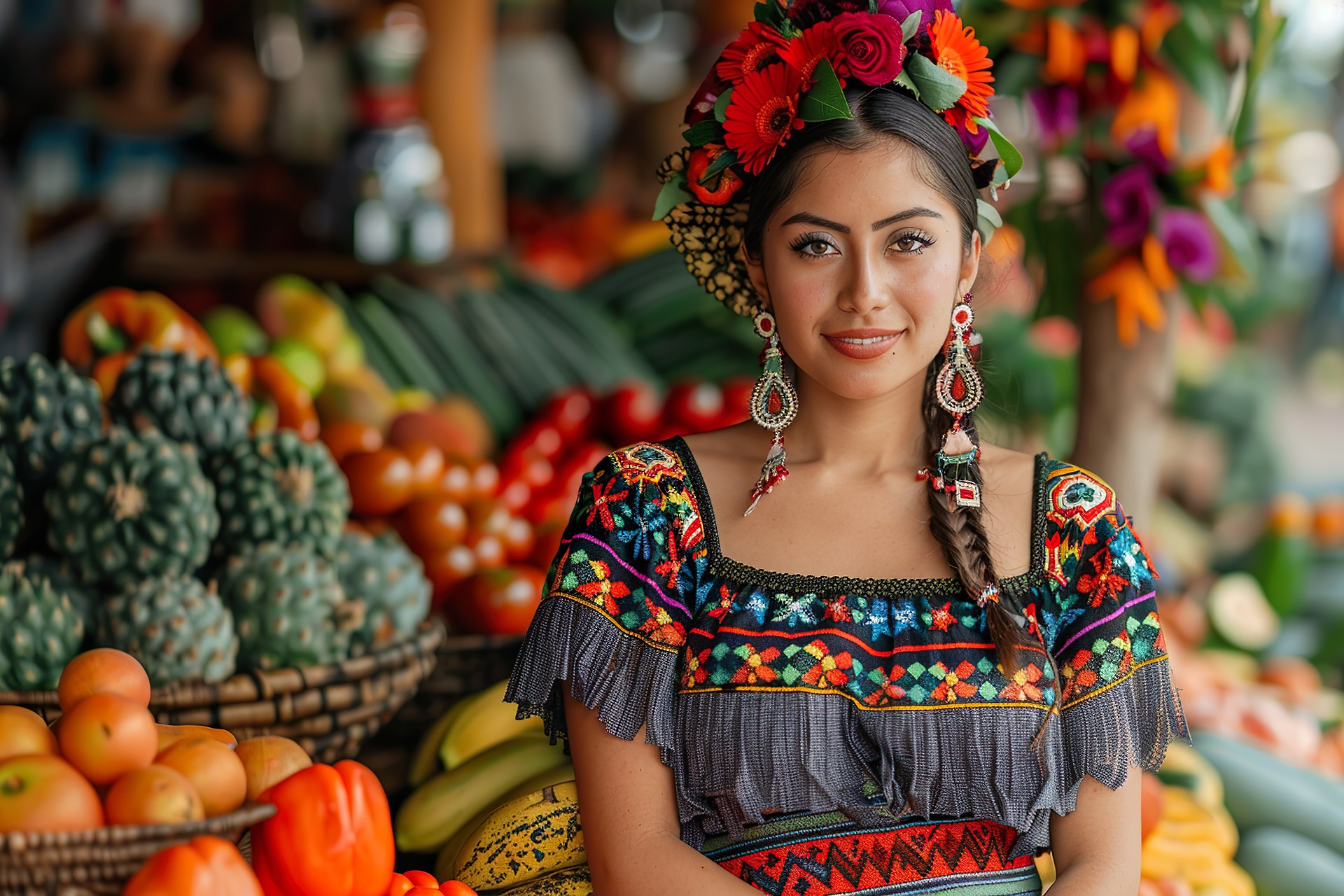 | If you’re traveling to Mexico for a week or two, I suspect you’ll eat in restaurants the whole time. Enjoy! However, if you plan on living in Mexico for extended periods, sooner or later, you’ll be shopping for food. |
In the larger cities of Mexico, you’ll find supermarkets of the same size and quality as in the US. The foods offered may be a bit different to reflect local tastes, but the stores offer the convenience of one-stop shopping. Still, if you confine yourself to sterile supermarkets in Mexico, you are going to miss out on much of the cultural experience in Mexico.
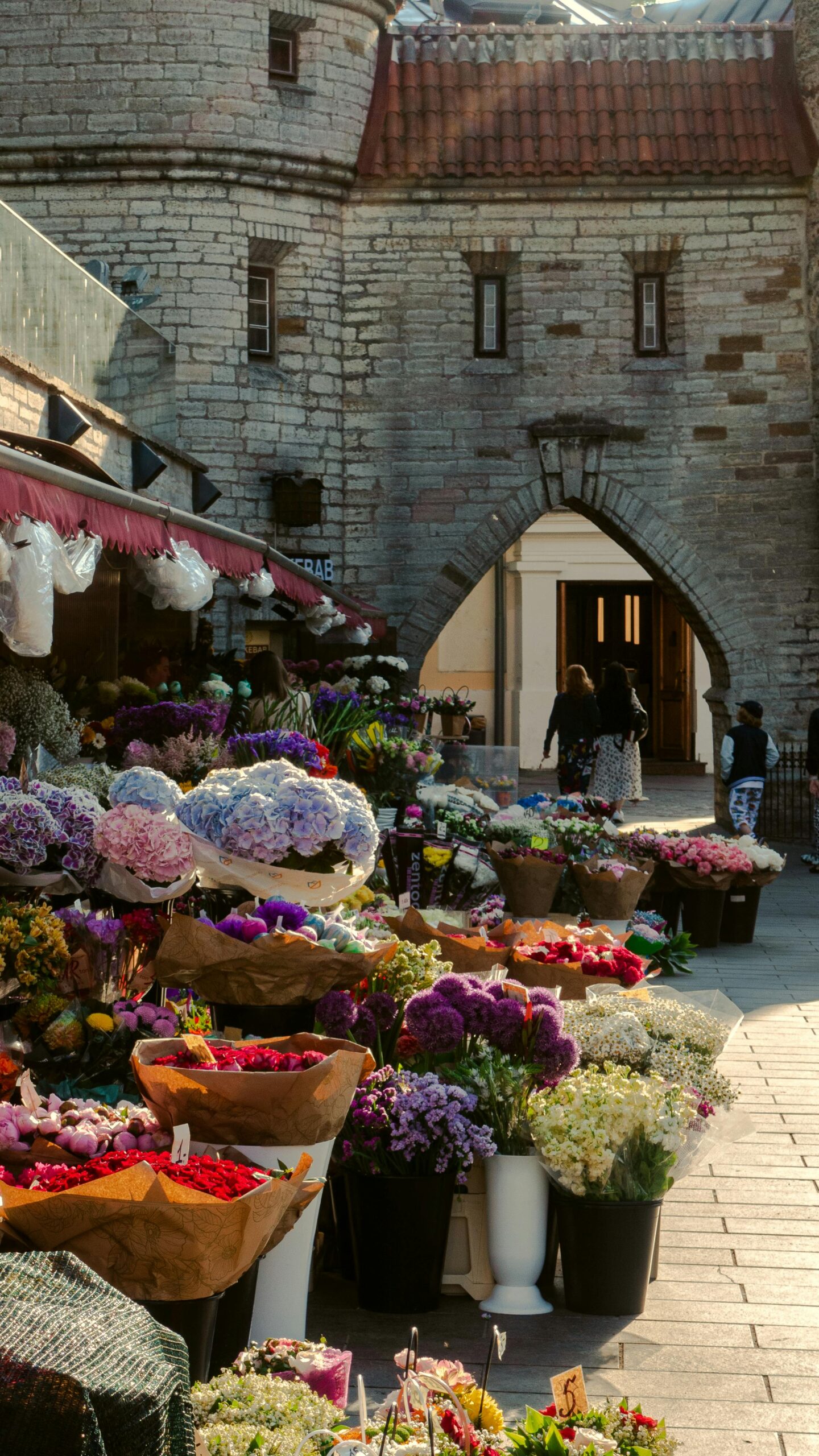 | Most towns have a main market, which varies in size depending upon the size of the town. Where I live, the Cholula central market (mercado Cosme del Razo) covers an area of a couple of square blocks. If you go to the Mexico City market (Central de Abastos or CEDA), you’ll find a market larger than many towns in Mexico. Often there may also be several smaller markets that open one or two days a week. Near our Mexican house is a market open two days a week, at which we do the majority of our food shopping or grocery shopping (“despensa” called here in Mexico). Although large central markets may be inside of buildings, smaller outdoor markets in Mexico albeit with tarps covering the stands and providing protection from rain and sun. The local vendors in Mexico have a collection of many individually-owned stalls, large and small, with a multitude of offerings. You’ll see all types of fruits and vegetables, meats, flowers, clothes, tools, dried foods, and usually a wide variety of cooked foods. Vendors specialize in particular offerings, e.g. fruits, vegetables, dried grains and beans, etc. Unless the market is very small, you’ll see many vendors offering the same things, and if you become a regular, you’ll soon gravitate toward your favorite vendors. |
Let me introduce you to some shopping tips for Mexican markets: Don’t bother taking your credit cards. There’s cash only markets in Mexico. Have small bills and change handy. Bring your own bags, and ideally a hand cart to help you carry your purchases home.
Each time we return to Mexico, one of the first things we do is go to the market to stock up on food. I think the thing I most look forward to is the cornucopia of fresh fruit in Mexico that is always available. We gorge ourselves on mangos, papayas, pineapples, oranges, watermelon, and several fruits unique to Mexico. You may argue that those fruits are available in the US also, and technically you would be correct. The difference is that in Mexico you buy them ripe, delicious, ready to eat, and cheaply. I never bother to pick out the fruit myself, although it is all laid out in front of me. And to making the Mexican market experience way better, I’ll tell the vendor “Quiero mangos para hoy.”(I want mangos for today.) It means, I want them ripe and ready to eat when I get home. Her practiced hands have never failed to select the perfect fruit. Alternatively I may say that I want them to eat in a few days. She will, with equal dexterity, pick out fruit that has not quite ripened to perfection. Basically, you’re buying fresh produce in Mexico, isn’t it wonderful?
As you walk the aisles in the market and reach the vegetable stalls, there will be distinct differences from the vegetable section of your local US supermarket. You won’t find groups of carrots in nice sealed plastic bags. String beans won’t be precut and packed in half pound bags. The vegetables will be loose or piled on tables. Many vegetables will have their long stems and leaves still attached. Some vegetables will look different from what you are used to. Carrots may be shorter and thicker. Leeks may be gigantic compared to what we have in the US. White onions usually take the place of yellow onions. Potatoes tend to be much smaller than the giant Idaho potatoes so common at home. These differences merely reflect the different species of plants growing locally, and are certainly not a negative – merely a difference.
You select the vegetables you want, and the local vendors will weigh them for you. Virtually all foods are sold by the kilo. There are a few exceptions, but not many. If you ask for a handful of cilantro the vendor will literally grab a handful, and charge you a few pesos. A few vendors may prepare small plastic bags of peas or corn that are used for stews, and are at a fixed price. Nobody will look askance if you wish to buy one stalk of celery, or one carrot. People routinely buy small quantities.
As you think about your menus for the week, you may decide to visit the “pollero” – the person selling chicken. You’ll go to another stall where freshly plucked, whole chickens will be hanging from their legs around the stall. Buying meat in Mexico is such an experience. You’ll tell the vendor what you want, how you want it cut, and he or she will prepare it for you. You might be asked if you want the head and feet. If you don’t, they’ll be sold to somebody else to prepare chicken bullion. If you need beef or pork, you’ll need to go to another stall where the butcher will ask you which cuts you want, and how much you want.
Dried beans are handy to have around the house, and maybe oatmeal for your breakfast. There’ll be at least one vendor specializing in that. Expect to have many different types of beans to choose from. Beans are an integral part of Mexican cuisine ingredients, so they are easy to find.
Although cleaning supplies, paper towels, toilet paper, dishwasher detergent, etc. are things that I typically buy in bulk at someplace like Costco (yes, Costco, Walmart and Home Depot have large outlets in Puebla, not too far from where we live.), all of those things are available in our local market. If we are getting low on something, we can buy it in the market in order to tide us over until we make our next trip to Costco.
| If you’re new to Mexican markets, you may find many things you can’t immediately identify. There may be large sacks of dried hibiscus flowers. You boil them in water, perhaps add a little sugar, and get what is known locally as “Agua de Jamaica.” You may see dried plant pods and learn that they are “tamarindo.” These you crack, boil, and use to make tamarind flavored water. In addition to Mexican cuisine ingredients, you’ll find dozens of different types of dried chiles. Invariably you’ll find somebody cooking and selling “chicharrón.” That’s deep fried pork fat. It’s popular in parts of the US and may go by the name of pork rind, crackling, or pork scratching. I’ve never developed a taste for it, but it is definitely a favorite among Mexicans. Unlike the supermarket, things bought in the market are not prewashed. Another tip we can share with you is whenever you return from the market you must immediately wash and disinfect all of our fruits and vegetables. It’s a bit more work, and perhaps we’re a little over zealous, but we are of the “better safe than sorry” school of thought. | 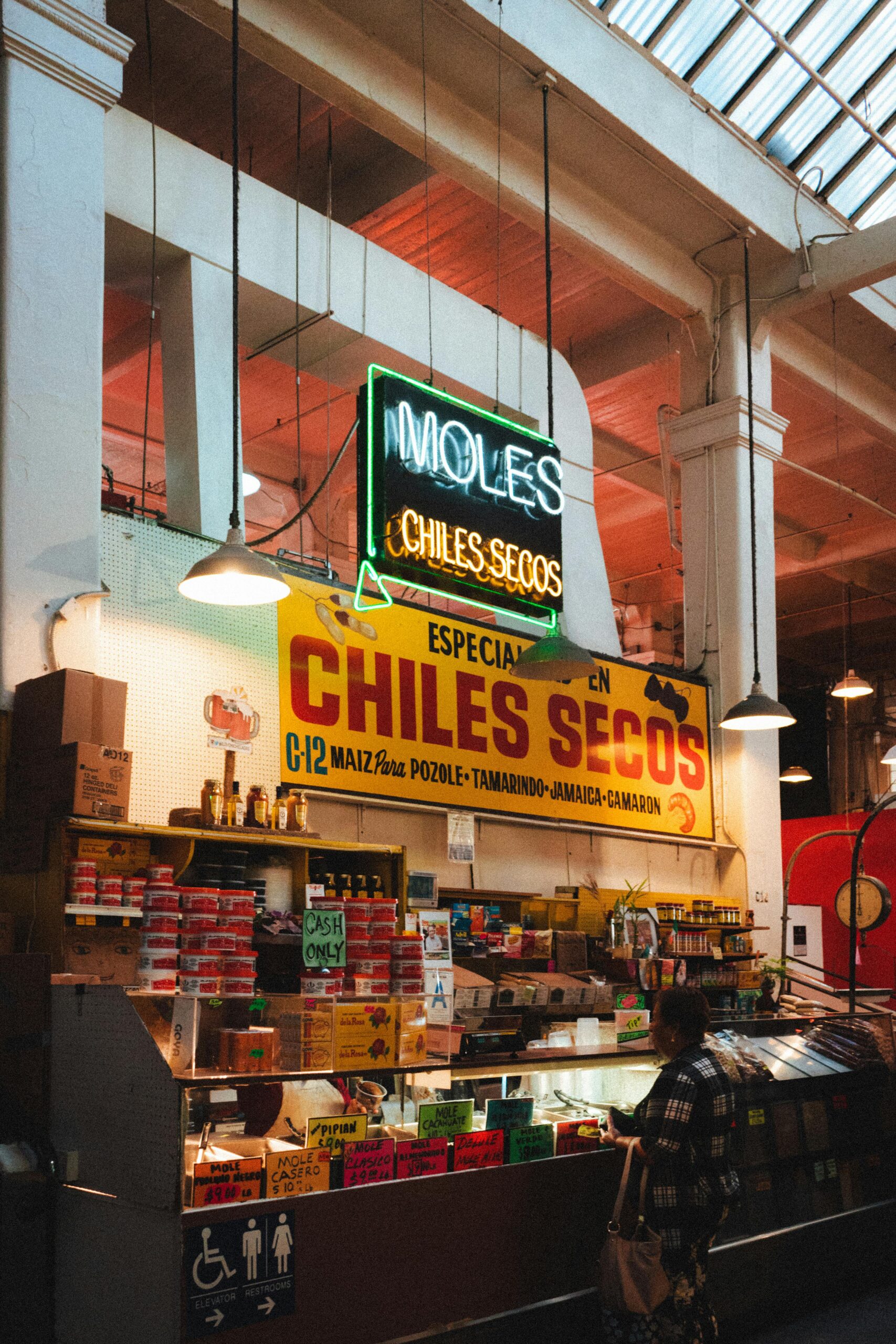 |
We don’t buy everything at the market. One of the things I love about Mexico is the plethora of small stores within easy walking distance of our house, where you can find local Mexican products without going too far away. A half block down the street from our house I buy fresh eggs. The eggs are sold by the kilo, and I receive a mixture of small and large. At another small store (or “tiendita”) I buy milk. Milk is usually sold European style, i.e. in unrefrigerated boxes. You don’t need to refrigerate them until after they have been opened. We have other favorite small stores in Mexico for pastries, bread, candy, ice cream, and numerous other items – all within walking distance of the house.
What don’t I like about the food in Mexico? Not much. I have lived most of my life in the northeastern US so I am accustomed to cold weather fruits and vegetables: apples, berries, many varieties of squash, celery root, parsnips, turnips, etc. Apples and berries are imported and readily available in Mexico, but those other items are difficult to find. I have a few personal favorites that are either difficult or expensive to buy in Mexico: steel cut oats, arborio rice, canned tomatoes. But, I would consider these things “nits” not really negatives.
| I hope this gives you some idea of what to expect if you plan on spending time in Mexico. If you spend any length of time there, you’ll soon gravitate to your favorite vendors in the Mexican market, and delight in finding specialty stores selling whatever your favorite foods are. You should embrace the experience of the traditional markets in Mexico, Puebla or Cholula, you won’t regret it! | 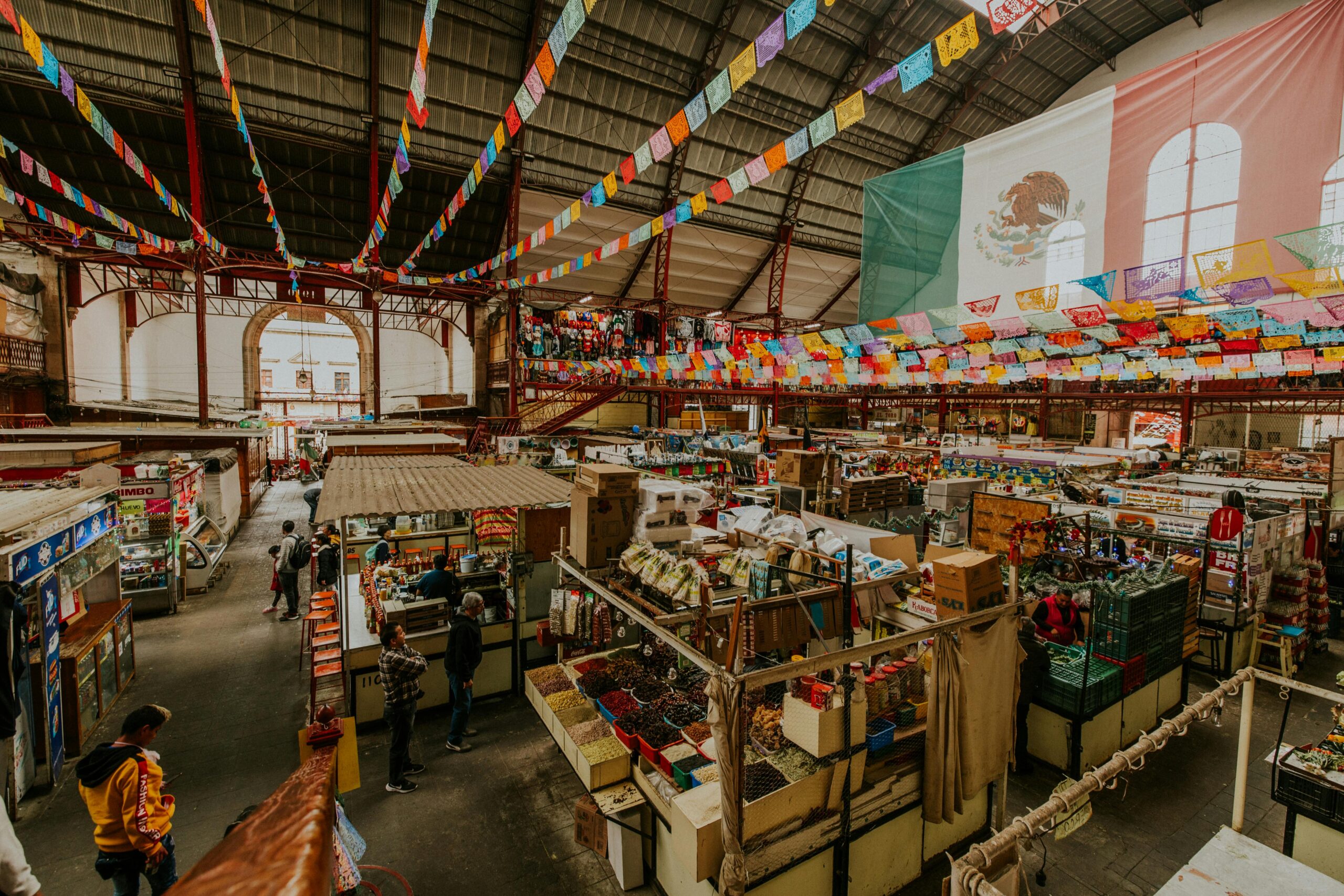 |
Author: Frank Souder, an enthusiastic Spanish student who spends part of his retirement in his home in Cholula, Mexico, and the rest of the time in the United States. His understanding and expression of Mexican Spanish is excellent, effortlessly using local idioms and phrases, though he continues to learn. As he himself says: «You have to practice until you can’t do it wrong.»
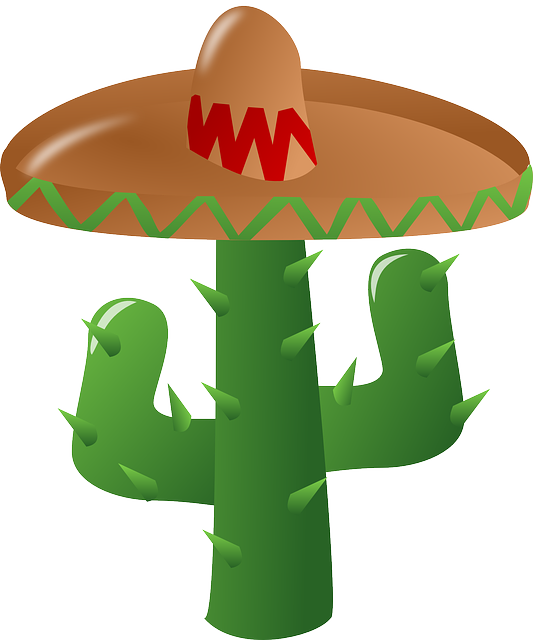 | Are you ready to try your Spanish? We invite you to read the Spanish version of this text where you can learn new verbs, nouns, and adjectives! |
Si viajas a México por una o dos semanas, sospecho que comerás en restaurantes todo el tiempo. ¡Disfrútalo! Sin embargo, si planeas vivir en México durante periodos prolongados, tarde o temprano tendrás que comprar comida.
En las grandes ciudades de México encontrarás supermercados del mismo tamaño y calidad que los hay en Estados Unidos. Los alimentos ofrecidos pueden ser un poco diferentes al reflejar los gustos locales, pero las tiendas ofrecen la comodidad de hacer la compra en un solo lugar. Aun así, si te limitas a los supermercados esterilizados, te perderás gran parte de la experiencia mexicana.
La mayoría de las ciudades tienen un mercado principal, cuyo tamaño varía en función de la población. Donde yo vivo, el mercado central de Cholula (mercado Cosme del Razo) abarca un par de manzanas. Si vas al mercado central de Ciudad de México (Central de Abastos o CEDA), encontrarás un mercado que es más grande que muchos pueblos de México. A menudo también puede haber varios mercados más pequeños que abren uno o dos días a la semana. Cerca de nuestra casa mexicana hay un mercado abierto dos días a la semana, en el que hacemos la mayor parte de nuestras compras de alimentos o “despensa”.
Aunque los grandes mercados centrales pueden estar dentro de edificios, los mercados locales más pequeños en México suelen estar al aire libre cubiertos con lonas, las cuales cubren los puestos y los protegen de la lluvia y el sol. Los vendedores locales en México tienen una colección de puestos a su propiedad, y pueden ser grandes o pequeños, con multitud de ofertas. Verás todo tipo de frutas y verduras, carnes, flores, ropa, herramientas, alimentos secos y, por lo general, una amplia variedad de alimentos ya cocinados. Los vendedores se especializan en ofertas concretas, por ejemplo frutas, verduras, cereales y frijoles secos, etc. A menos que el mercado sea muy pequeño, verás a muchos vendedores que ofrecen lo mismo y, si te conviertes en un cliente habitual, pronto tendrás a tus vendedores favoritos.
Déjame darte unos tips para comprar en los mercados mexicanos: No te molestes en llevar tarjetas de crédito. Los mercados funcionan con dinero en efectivo. Ten a mano billetes pequeños y cambio. Lleva tus propias bolsas y si es posible un carrito de mano para llevar tus compras a casa.
Cada vez que volvemos a México, una de las primeras cosas que hacemos es ir al mercado para surtirnos de comida. Creo que lo que más espero con ansias es ver la abundancia de fruta fresca que siempre hay disponible. Cada que vamos nos llenamos de mangos, papayas, piñas, naranjas, sandías y varias frutas exclusivas de México. Podrías decir que esas frutas también las encuentras en los EE.UU., y técnicamente estás en lo cierto. La diferencia es que en México se compran maduras, deliciosas, listas para comer y baratas. Nunca me molesto en elegir la fruta yo mismo, aunque la tenga delante mío. Y, para mejorar la experiencia de los mercados mexicanos, le digo a la vendedora «Quiero mangos para hoy», es decir, los quiero maduros y listos para comer en cuanto llegue a casa. Sus manos expertas nunca fallan a la hora de seleccionar la fruta perfecta. También puedo decir que los quiero para dentro de unos días. Ella, con la misma destreza, selecciona la fruta que aún no ha madurado a la perfección. Básicamente estás comprando producto fresco en México, ¿no es increíble?
Al recorrer los pasillos del mercado y llegar a los puestos de verduras, se aprecian las claras diferencias en la sección de verduras del supermercado estadounidense. No encontrarás grupos de zanahorias en bolsas de plástico bien cerradas. Los ejotes no estarán precortados y empaquetados en bolsas de medio kilo. Las verduras estarán sueltas o apiladas en mesas. Muchas verduras tendrán todavía los tallos largos y las hojas. Algunas verduras tendrán un aspecto diferente al habitual. Las zanahorias pueden ser más cortas y gruesas. Los puerros son más grandes que en Estados Unidos. Las cebollas blancas suelen sustituir a las amarillas. Las papas suelen ser mucho más pequeñas que las gigantescas patatas de Idaho, tan comunes en casa. Estas diferencias no son más que el reflejo de las distintas especies de plantas que crecen localmente, y desde luego no son negativas, sino simplemente una diferencia.
Tu eliges las verduras que quieres y el vendedor se las pesa. Prácticamente todos los alimentos se venden por kilos, claro, hay algunas excepciones, pero no muchas. Si pides un puñado de cilantro, el vendedor cogerá literalmente un puñado y te cobrará unos cuantos pesos. Algunos vendedores preparan pequeñas bolsas de guisantes o maíz que se utilizan para guisos, y estas tienen un precio fijo. Nadie le mirará con recelo si quiere comprar una rama de apio o una zanahoria. La gente suele comprar pequeñas cantidades.
Mientras piensas en los menús de la semana, quizá decidas visitar al «pollero», la persona que vende pollo. Irás a otro puesto donde habrá pollos enteros recién desplumados y colgados de las patas. Comprar carne en México es toda una experiencia. Le dirás al vendedor lo que quieres, cómo lo quieres cortado, y él o ella te lo preparará. Puede que te pregunten si quieres la cabeza y las patas. Si no, se las venderá a otra persona para que prepare el pollo en caldo. Si necesitas carne de ternera o cerdo, tendrás que ir a otro puesto donde el carnicero te preguntará qué cortes quieres y en qué cantidad.
Los frijoles secos son útiles para tener en casa, y quizá los copos de avena para el desayuno. Habrá al menos un vendedor especializado en ello. Hay muchos tipos de frijoles para elegir. Los frijoles son parte integral de la cocina mexicana, así que son fáciles de encontrar.
Aunque los artículos de limpieza, toallas de papel, papel higiénico, detergente para lavavajillas, etc. son cosas que normalmente compro a granel en algún lugar como Costco (sí, Costco, Walmart y Home Depot tienen grandes puntos de venta en Puebla, no muy lejos de donde vivimos), todas esas cosas están disponibles en nuestro mercado local. Si nos estamos quedando sin algo, podemos comprarlo en la tienda más cercana para que nos sirva de ayuda hasta que hagamos nuestro próximo viaje a Costco.
Si eres nuevo en los mercados mexicanos, es posible que encuentres muchas cosas que no puedes identificar inmediatamente. Puede haber grandes sacos de flores secas de hibisco. Las hierves en agua, quizás añades un poco de azúcar, y obtienes lo que se conoce localmente como «Agua de Jamaica». Puede que veas vainas secas de plantas y aprendas que son «tamarindo». Éstas se parten, se hierven y se utilizan para hacer agua con sabor a tamarindo. Encontrarás docenas de tipos diferentes de chiles secos. Invariablemente encontrarás a alguien cocinando y vendiendo «chicharrón» (grasa de cerdo frita). Es popular en algunas partes de EE.UU. y puede recibir el nombre de pork rind, crackling, o pork scratching. A mí nunca me ha gustado, pero sin duda es uno de los platos favoritos de los mexicanos.
A diferencia del supermercado, las cosas compradas en el mercado no se lavan previamente. Otro tip que podemos compartirte es que cada vez que regreses del mercado, lava y desinfecta inmediatamente todas las frutas y verduras. Es más trabajo, y tal vez somos demasiado cautelosos, pero preferimos pensar: «más vale prevenir que curar».
No compramos todo en el mercado. Una de las cosas que me encanta de México es la gran cantidad de pequeñas tiendas a poca distancia de nuestra casa. Estas tiendas venden productos mexicanos locales. A media cuadra de nuestra casa compro huevos frescos. Los huevos se venden por kilo, y los recibo tanto pequeños como grandes. En otra tienda pequeña (o tiendita) compró leche. La leche suele venderse al estilo europeo, es decir, en cajas sin refrigerar. No hace falta refrigerarlas hasta después de abrirlas. Tenemos otras tiendas favoritas de bollería, pan, caramelos, helados y muchos otros artículos, todas a poca distancia de casa.
¿Qué es lo que no me gusta de la comida en México? No mucho. He vivido la mayor parte de mi vida en el noreste de Estados Unidos, así que estoy acostumbrado a las frutas y verduras de clima frío: manzanas, bayas, muchas variedades de calabaza, raíz de apio, chirivías, nabos, etc. Las manzanas y las bayas se importan y se consiguen fácilmente en México, pero otros productos son difíciles de encontrar. Tengo algunos favoritos personales que son difíciles de encontrar y además son caros en México: avena irlandesa, arroz arborio, tomates enlatados. Aún así, consideraría estos aspectos «pequeñas cositas», no realmente cosas negativas, y me imagino que muchos de ustedes después de leer esto no lo considerarán negativo en absoluto.
Espero que esto te dé una idea de lo que puedes esperar si piensas pasar una temporada en México. Si pasas algún tiempo allí, pronto tendrás vendedores favoritos en el mercado y te encantará encontrar tiendas especiales que vendan cualquiera de tus comidas favoritas Deberías adentrarte a la experiencia tradicional de mercados en México, Puebla o Cholula. ¡No te arrepentirás, te lo aseguro!
Autor: Frank Souder, estudiante entusiasta de español que pasa parte de su retiro en su casa ubicada en Cholula, México, y el resto del tiempo en su país, Estados Unidos. Su nivel de comprensión y expresión del español mexicano es excelente, utilizando modismos y frases locales con facilidad, aunque sigues aprendiendo. Como él mismo dice: “Hay que practicar hasta que ya no puedas hacerlo mal”.
We have highlighted some verbs, nouns, and adjectives. You can use them on everyday situations by learning and knowing the meaning:
| Verbs | Adjectives | Nouns |
| Comprar: to buy | Diferente: different | Manzana: block |
| Surtirse: stock up on [sth] | Maduro: ripe | Oferta: sale/offer |
| Identificar: to identify | Fresco: fresh | Puñado: handful |
We would love to see you in the next blog! Stay tuned!
Funciona gracias a WordPress
